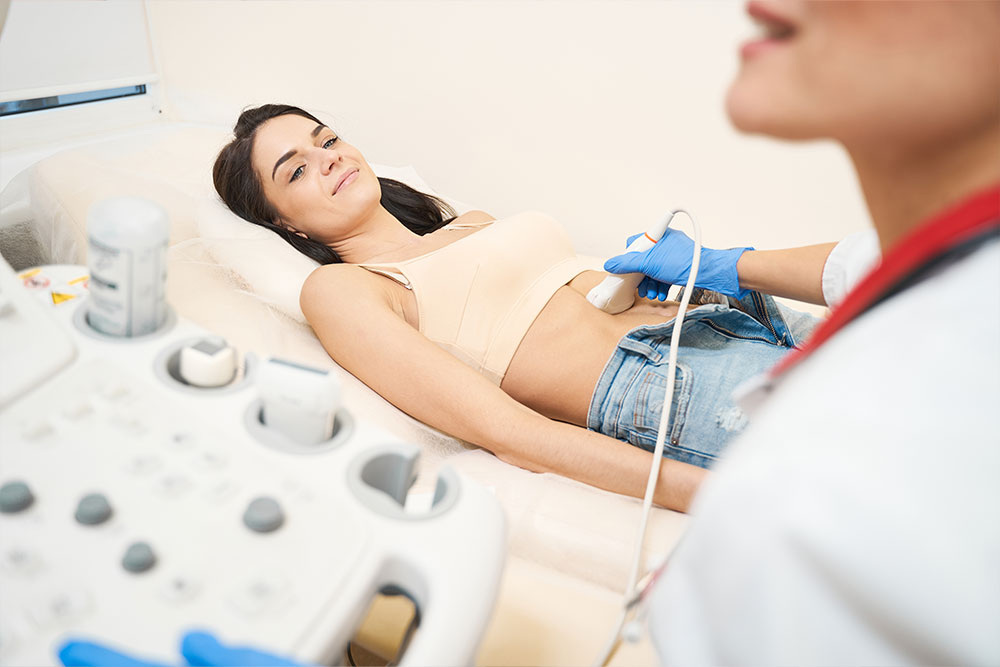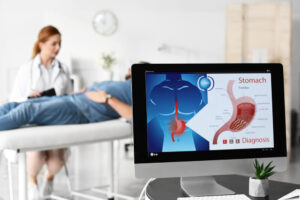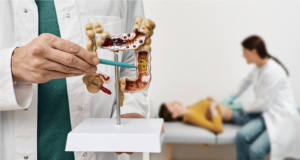
Integrative Testing Methods for Diagnosing Digestive Issues
Digestive issues are some of the main reasons why millions of people get emergency care. Moreover, according to data from the CDC, around 35.4 million people visit a physician’s office because of a disease that concerns the digestive system.
Among these, around 1 in 10 people receive a wrong diagnosis for their condition. According to data from the Division of Gastroenterology & Hepatology department in Jacksonville, 80% are referred for further evaluation. This happens because of false positives/negatives and a lack of clear data.
Some succeed in finding the root problem, whereas others only treat the symptoms. Naturopaths focus on integrative testing methods that look beyond structural abnormalities. This article will discuss their importance, along with some methods used by functional medicine to diagnose GI issues.
What Makes Integrative Testing Different from Conventional GI Testing?
Integrative testing differs from conventional GI testing because it looks beyond structural abnormalities. Doctors use tools such as a colonoscopy or endoscopy to find a problem, but those are not always apparent in GI concerns.
When comparing structural vs functional medicine, the former looks at visible issues and symptom treatment. However, functional GI testing looks at the root cause of conditions, even if there’s no obvious damage.
Integrative testing uses a proactive approach. These tests assess the function of the gut, flora, enzymes, and inflammation. They are patient-centered and aim to restore balance and support long-term wellness.
Integrative labs reveal causes, and finding the source of the symptoms puts the focus on prevention. This way, you don’t just fix the symptoms. You find out why they formed in the first place. This is particularly helpful for patients with chronic GI conditions.
What Are the Most Common Functional Tests Naturopaths Use for Digestive Health?
Some of the most common tests used to diagnose digestive health issues include stool tests, breath tests, organic acid testing (OAT), and food sensitivity tests.
These functional tests detect pathogens in your gut while being non-invasive. Here’s what you can expect:
- Stool Tests: A comprehensive stool test looks for parasites, bacterial imbalances, yeast overgrowth, intestinal inflammation, and issues with the digestive enzymes. It’s most commonly used in cases of digestive issues and fatigue, but also when the naturopath suspects dysbiosis. We like to use Genova or Diagnostic solutions for comprehensive stool testing.
- SIBO Breath Test: These tests check the levels of methane and hydrogen in your small intestine via breath. Patients are asked to consume a sugar solution and allow it some time to ferment. If the levels are higher than average, it suggests small intestinal bacterial overgrowth (SIBO). It’s mostly used for chronic bloating, gas, and IBS.
- OAT –These tests take a urine sample and look for things such as yeast toxins, microbial metabolites, and neurotransmitter balance. These biochemical markers show if there’s a systemic imbalance that suggests gut issues. It’s mostly used alongside stool tests.
- Food Sensitivity Tests – These are blood tests that check immune reactivity to certain foods. Rather than looking for food allergy antibodies (IgE), these look for sensitivities (IgG/IgA). These are less severe but cause delayed symptoms such as headaches, bloating, and skin issues.
Most naturopaths combine multiple tests to get a broader perspective. This approach is effective because some symptoms overlap. Comprehensive testing reveals hidden dysfunctions and helps create a microbiome-targeted treatment protocol.
Comprehensive Stool Analysis
Stool samples offer comprehensive stool analysis that looks for pathogens, microbial balance issues, inflammation, fat content, and enzyme dysfunctions. Here’s a broader breakdown:
- Harmful and beneficial bacteria balance to determine microbiota health
- Metabolic byproducts, such as beta-glucuronidase, that affect hormone clearance in the gut. High levels indicate you are recycling your estrogen, which can cause the patient to have worsening hormonal symptoms. This is also an indicator of dysbiosis and the need to support the liver.
- Parasites and viruses, such as Giardia Lamblia, are found through antigen detection methods
- Fungi and yeast growth, especially those from the Candida family
- Inflammatory markers, such as calprotectin, that measure immune activity
- Enzyme-measuring markers, such as elastase, which are used to look at the pancreatic output
- Fat content, which helps identify bile insufficiencies or malabsorption
- Secretory IgA: assessing mucosal immunity
According to joint studies at the IIT Research Institute and the Loyola University Medical Center, stool samples offer 80% sensitivity. This allows naturopaths to gather data on the pathogens in the stool.
The results identify dysfunction and help naturopaths create a personalized treatment. However, they become even more accurate with advanced tools, specifically from companies such as Genova, Diagnostic solutions (GI MAP) and Doctor’s Data.
GI-MAP identifies microbial DNA factors using qPCR (quantitative polymerase chain reaction). This paints a bigger picture compared to traditional labs that analyze stool. It’s a good alternative for those who have slight dysbiosis or low-level infections, because it looks further than the live culture.
Doctor’s Data is yet another advanced tool that looks at the gastrointestinal functions. Naturopaths use it to identify deficiencies and pathogens that put the patient at risk.
SIBO Breath Testing (Lactulose and Glucose)

The SIBO breath test is a non-invasive testing method that checks hydrogen and methane levels in the small intestine.
The bacteria ferment sugars administered by the providers, and the gases rise in the breath test. This method is particularly effective for patients at risk of IBS.
According to studies led by Kee Huat Chuah, an average of 38% of IBS patients are initially affected by SIBO. High levels of hydrogen-producing bacteria lead to symptoms such as diarrhea, whereas methane is associated with constipation.
SIBO testing uses two substrates for sugar: lactulose and glucose.
- Lactulose: Non-absorbable carbohydrate that passes through the SI and reaches the colon. It’s more effective for distal SIBO.
- Glucose: Fermentation-based compound that’s rapidly absorbed by the small intestine. It’s best for proximal SIBO and offers fewer chances of small positives.
While many IBS patients have SIBO, not every SIBO patient has IBS. Testing reveals whether it’s just SIBO. A naturopath tailors treatments based on the patients’ microbiota health.
Food Sensitivity Testing (IgG/IgA Panels)
Food allergies are different from food sensitivities in their reaction time and antibodies. Allergy testing looks for IgE antibodies, whereas sensitivities check the IgG/IgA panels. Allergies also provide immediate reactions, whereas sensitivities are delayed and appear hours or days later.
There’s controversy in mainstream medicine because symptoms of allergies and sensitivities sometimes overlap. According to data gathered in 2023 by the CDC, an average of 6.2% of people have a food allergy. Sometimes, these are just sensitivities misclassified as allergies.
Naturopathic protocol uses enzyme-linked immunosorbent assay (ELISA) testing and food panels to measure immune-mediated IgA and IgG antibodies. The antibodies flag sensitivity to specific foods.
Elimination diets remove triggers temporarily after IgG detection, keeping patients on foods with low trigger potential. These foods are reintroduced after 3-6 weeks, at which point the patient monitors the symptoms.
Organic Acids Testing (OAT)
Organic acid testing (OAT) tests the urine for mitochondrial dysfunction, microbial metabolites, and neurotransmitter imbalance. This is a common testing method to detect urine biomarkers such as:
- Candida: Yeast overgrowth that disrupts immune functions and the digestive system.
- Clostridia: Bacteria that suggest high toxicity levels in the gut
- Oxalates: The organic acids accumulate and cause issues such as kidney stones
- Dysbiosis: The acids indicate an imbalance in the microbiome, which leads to chronic GI conditions
OAT is a non-invasive method that tests the metabolic process in an indirect way. The urine offers information for various systems on a cellular level, thanks to advanced technology.
Functional medicine often combines OAT testing with stool testing. This offers broader insight into the microbiome and helps naturopaths identify the root cause. The results guide therapy and help patients get targeted treatments.
Leaky Gut and Zonulin Testing

Leaky gut is a complex condition to diagnose, but it’s now possible with zonulin testing. Zonulin is a protein that regulates the tight junctions located in your intestinal barrier.
When active, zonulin opens the gut lining and increases. Once this happens, its permeability allows antigen entry into the bloodstream.
The body overreacts and causes systemic inflammation that turns into leaky gut syndrome. At this point, the immune system becomes confused and attacks both the harmful and healthy tissue. This leads to the development of autoimmune diseases.
Zonulin testing prevents that, as it checks for elevated levels. According to studies performed by the University of Muenster, the average person should have between 28 and 42 ng/mL zonulin concentration. Anything beyond that suggests leaky gut syndrome.
H. pylori and Pathogen Panels
Pathogens such as H. pylori, parasites, and viruses contribute to ongoing gut issues because they stay in the GI tract. Targeted tests detect antigens that reveal the culprit.
Stool testing is the most common, but urea breath testing is frequently used alongside it to reveal:
- H. pylori: Biofilm-forming bacterium that’s acid resistant (decreasing stomach acid in the stomach). The bacteria colonize the stomach lining and contribute to ulcers and gastritis.
- Parasitic Infections: Panels reveal parasitic infections and pathogens, such as Giardia, that lead to bloating, IB-like symptoms, and dysbiosis.
- Viruses: Testing checks for enteroviruses and noroviruses that are responsible for inflammation and immune responses.
Urea breath tests (UBT) offer antigen markers for H. pylori. Stool samples also detect H pylori and t when choosing companies like the ones mentioned above for testing, they will also cover other pathogens as well.This makes it helpful to look at the entire microbiome, not just H pylori. This makes it more helpful to treat the patient holistically and from a root cause perspective.
When Should You Combine Multiple Tests?
You should combine multiple tests when you notice overlapping symptoms that require layered diagnostics. For example, a patient with chronic bloating may have SIBO, but they may also have candida or H. pylori.
It’s even possible to have more than one issue. For instance, studies by Natalie Soliman at Ohio University show that 34% of SIBO patients also have yeast overgrowth.
Naturopaths follow a strategic approach by using a diagnostic stack. The multiple tests clarify the picture, and the labs guide the plan for the treatment. This multimodal treatment helps you get to the root of the problem as mentioned earlier and not just manage symptoms.
Are These Tests Scientifically Validated and Clinically Useful?
Conventional medicine looks at functional biomarkers with skepticism. However, naturopaths use these lab results to provide a more targeted diagnosis. This helps improve clinical outcomes and create an actionable treatment plan.
Emerging research at the University of North Carolina School of Medicine and other universities led by Michael A. Lewinski supports the use of these tools. Stool PCR panels have proven reliable and practical, with careful interpretation improving patient results.
These tests are not necessarily made to replace conventional diagnostic tools. However, they catch subtle imbalances such as microbial shifts or nutrient deficiencies. This helps prevent chronic illness and improve long-term wellness.
In our experience…
Patients will present to us with classic H. pylori symptoms including gas, bloating, acid reflux, rash, nausea, etc. They will get a conventional stool panel from their doctor’s office and be told they do not have H. pylori.
When we run a GI map, which has different ranges of detection for H. Pylori, we often see H. Pylori present. If they are symptomatic, we then treat them with a proper herbal protocol. It will not just include antimicrobial herbs, but a comprehensive plan to address their entire clinical picture, including other microbiome factors that we see in the stool results.
Just like many doctors are missing Lyme Disease in lots of patients because a basic Elisa test or Western blot may be negative even when they have the disease, more specialized testing is extremely helpful because it will reveal more information.
We like to use these specialty stool tests because we know we will gather more information and may see levels of organisms that a conventional test would not pick up.
Oftentimes our patients will tell us they did a stool test via their conventional doctor and they are unfortunately just a few basic bacteria or parasites, and not as nearly thorough as the ones naturopaths use to help patients.
- Post Title : Integrative Testing Methods for Diagnosing Digestive Issues
- Author: Dr. Sparks, N.D
- Clinically reviewed by - Dr. Susan Cucchiara, N.D.
- Date Published :


